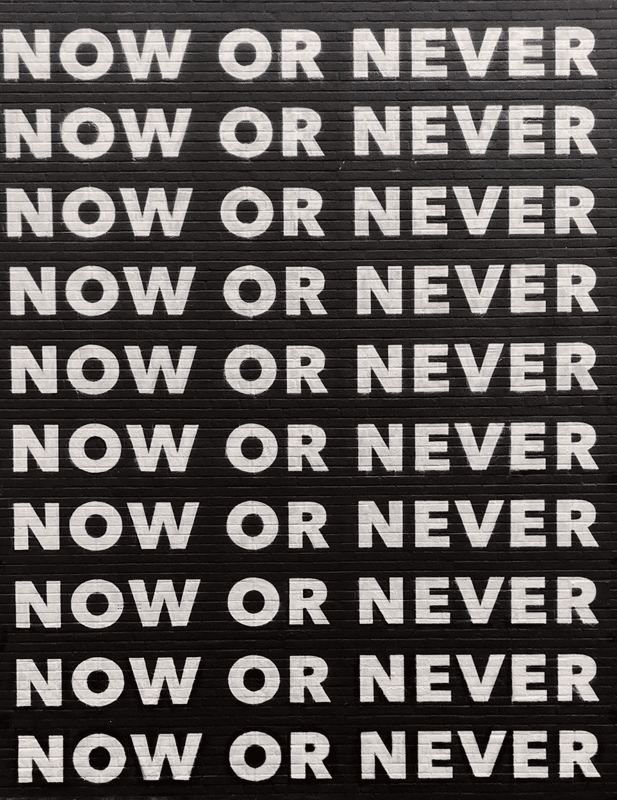Your marketing is what connects you to your audience—it sends them a message, lets them know what you’re all about. But you also want your marketing to connect your audience back to you and your business.
Including a Call to Action (CTA)—obvious instructions on what viewers should do next—is necessary to build your audience, develop a list of leads, and garner interest in your services.
Here are seven simple tips to help you write effective CTAs that will inspire your readers to take action.
1. Make Your Action Actionable
This sounds redundant, but you really want to make sure that your call-to-action involves doing something. Something specific! Something they can do the minute they are done reading your call to action.
Adding hyperlinks to your CTAs is a very good habit because it lets your readers take action while they’re reading—the next step is right there, embedded in the text or the image.
Once they click on the link, they’ll be prompted with the next action: buy a product, subscribe to your newsletter, read a blog post.
Remember: readers aren’t as familiar with your content and website as you. If you don’t give viewers a specific next step they can immediately act on, you may want to reconsider your CTA.
2. Use Graphics
Asking your viewers to do something means writing it out, but you don’t have to write your CTA on a blank page.
Embedding your text in a graphic draws attention to your CTA and emphasizes the rewards of acting. For instance, you can show a picture of the product that you’re selling, or the cover of your free eBook available for download.
Most people who read online will skim to find pertinent information; graphics ensure that your readers will see your important CTA instead of glossing over it.
3. Coordinate Colors
Speaking of visuals, color choices can determine whether your most pertinent information is read or skipped.
Your website might feature specific color palettes matching your brand and utilizing those colors in your CTA will emphasize your message without disrupting the look of your webpage.
Even without using graphics, deliberate (but not excessive) use of contrasting colors in your text, with an occasional change in font size, can make your message POP for your viewers.
4. Pay Attention to Beginnings and Endings
Online readers tend to focus on simple, concise sections of your content that carry meaningful information. This means you should pay close attention to:
- Topic sentences
- Subheaders
- Bullet Points
- Conclusions
Featuring your call to action “above the envelope” (on the screen before the user starts scrolling) and at the end of your webpage (after they’ve scanned all the important information) is usually a smart idea.
In addition to placing your CTA, make sure your content provides useful, meaningful info that tells your readers that acting will pay off.
5. Create A Window of Opportunity for Action (or imply one)
The internet moves at a fast pace: fads come and go; opportunities disappear and pop up again. It’s very easy for users to say, “I’ll check this out later,” and then totally forget to fulfill that promise.
Creating a window of opportunity for your CTA can incentivize more users to act immediately, rather than risk them putting it off for another day that never seems to come. CTAs for giveaways, seasonal sales, and promotional opportunities can be very effective.
Sometimes you may not have any limited opportunity events on hand, but that doesn’t mean you can’t use rhetoric to emphasize immediate returns. Simple phrases like “act now!” or “sign up today!” suggest that viewers don’t want to miss out, even if there’s no hard deadline.
6. Facts are On Your Side
It can be tempting to use a lot of popular, fluffy language that will make your CTA seem exciting.
The fact is, readers have a pretty good eye for boasting, and want to read information that is relevant to them. Marketing jargon like “hottest ever!” or “once-in-a-lifetime opportunity!” reads as insincere and vague.
Citing verifiable, relevant facts and statistics is an effective way to draw attention to your CTA while also proving that you have something important to offer beyond ambiguous promises.
7. Keep Track of What Works! (And What Doesn’t)
This last tip is maybe the most important one, because it helps you make sure that the other tips are working.
Unfortunately, there’s no magical formula for marketing success; you need to figure out what messages and strategies work for your specific audience.
Even if you follow all six of our previous tips to the letter you still may not see the engagement that you want. It takes time, patience, and repetition to figure out what works.
If several CTAs perform well, look closely at the rhetoric, the placement, the design, and compare it with less successful attempts. Don’t get too used to doing the same thing over and over again.
Need to cut down on all that time you spend writing up original marketing materials, but don’t want to risk diminishing your marketing effectiveness? Let us take some of those extra tasks off your plate so you can focus on running your business!




